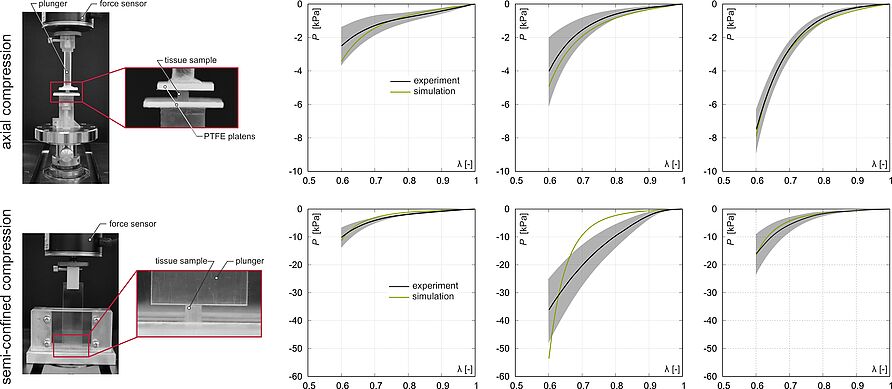In this work, a three-dimensional model was developed to describe the passive mechanical behaviour of anisotropic skeletal muscle tissue. To validate the model, orientation-dependent axial (0°, 45°, 90°) and semi-confined compression experiments (mode I, II, III) were performed on soleus muscle tissue from rabbits. In the latter experiments, specimen deformation is prescribed in the loading direction and prevented in an additional spatial direction, fibre compression at 0° (mode I), fibre elongation at 90° (mode II) and a neutral state of the fibres at 90° where their length is kept constant (mode III). Overall, the model can adequately describe the mechanical behaviour with a relatively small number of model parameters. The stiffest tissue response during orientation-dependent axial compression (-7.7 ± 1.3 kPa) occurs when the fibres are oriented perpendicular to the loading direction (90°) and are thus stretched during loading. Semi-confined compression experiments yielded the stiffest tissue (-36.7 ± 11.2kPa) in mode II when the muscle fibres are stretched. The extensive data set collected in this study allows the study of the different error measures depending on the deformation state or the combination of deformation states.
F. Walter, R. Seydewitz, P. Mitterbach, T. Siebert, M. Böl
On a three-dimensional model for the description of the passive characteristics of skeletal muscle tissue
Biomechanics and Modeling in Mechanobiology, online first, (2022) [Link]

